Follow in the Footsteps of Historical Icons
This is a truly spectacular day. We leave the port city of Kusadasi for Ephesus, one of the 12 cities of Ionia. This is a stunning marvel in the hills above the Aegean and one of the world’s largest and important open-air archaeological museums. It was also the home to one of the Seven Wonders of the Ancient World, the Temple of Artemis.
Ephesus was founded by the Ancient Greeks around 2000 BC. It was the wealthiest of the Ionian cities and became one of the key cultural centres in the Mediterranean. The city was dedicated to the goddess Artemis. The temple built in her honour took 120 years to complete. Ephesus later became the second largest city in the Roman Empire and is rivalled only by the Forum and the Acropolis as one of the most complete classical cities in Europe. Even so, only 13 per cent of Ephesus has been uncovered.
We wander through the Odeon and the Prytaneion, stroll the marble colonnades of Curetes Street to visit Trajan’s Fountain, Hadrian’s Temple, Scholastica Baths and the astonishing Terrace Houses. Nearby is the spectacular Library of Celsus, almost entirely reconstructed, and the Agora. The Great Theatre of Ephesus where St Paul once preached, held crowds of up to 24,000. Today it still hosts concerts and other performances. Our tour takes us to the Rug Village for lunch and a demonstration of traditional Turkish carpet weaving.
We then head for the ancient coastal city of Miletus, another of the greatest and wealthiest cities in Ancient Greece and one of the first to mint coins. Homer mentioned Miletus in The Iliad and Paul preached here on the way back to Jerusalem. There are many well preserved ruins here, including the Temple of Apollo and a Byzantine church.
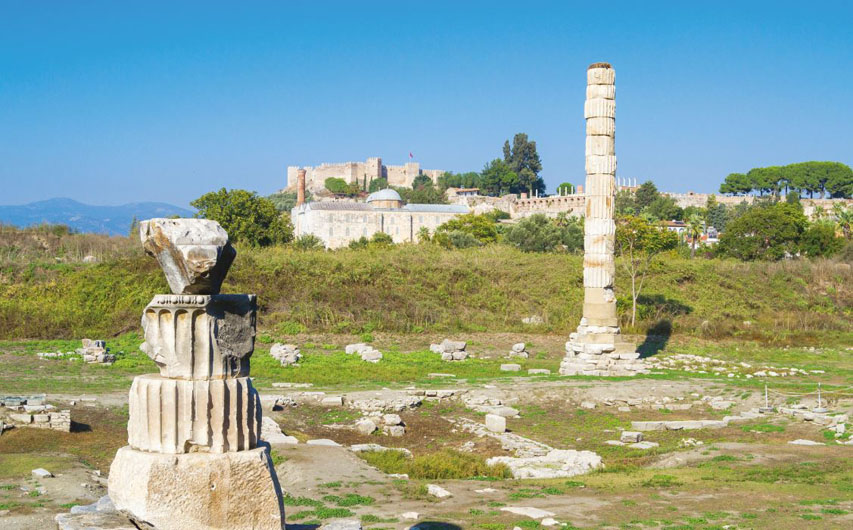
Related Amazing excursions
National Geographic: The History of the Olympic Games
Learn MoreFascinating Oman Tour
Learn MoreWadi Arbayeen
Learn MoreTraditional Omani Dhow Cruise
Learn MoreLeisure Stay at Hotel Intercontinental
Learn MoreHighlights of Muscat
Learn MoreHigh tea Al Bustan Palace
Learn MoreDolphin watching & snorkeling
Learn More
Discover, connect & cook
Learn MorePanoramic Tour
Learn MoreMystical Muscat
Learn MoreCultural Tour
Learn More4X4 Mountain Safari
Learn More
Snorkeling with turtles
Learn MorePool & Beach Fun
Learn MoreA day at the Beach
Learn MoreEast Coast Panoramic
Learn MoreFujairah & Surroundings
Learn More
Fujairah Panoramic Tour & Local Family
Learn More
Fujairah & Khorfakkan Traditions
Learn MoreDubrovnik’s highlights through your lens – photography tour
Learn MoreNational Geographic: The Story of Poljica
Learn MoreNational Geographic: The Legacy of Dalmatia’s Heritage Recipes
Learn MoreSilk Production and the Tradition Behind Konavle Embroidery
Learn MoreThe Benefits and Flavours of Oyster Farming
Learn MoreNational Geographic Day Tour: Cooking with the Mujos
Learn MoreRhodes Unchartered Discovery
Learn MoreThe History of the Olympic Games
Learn MoreThe fascinating world of bees
Learn MoreBlutopia: A Marine Biology Experience
Learn MoreThe History of the Olympic Games
Learn MoreAbu Dhabi Dhow Cruise
Learn MoreSeaworld Yas Island Tour
Learn MoreYas Marina Circuit Tour with panoramic drive in Abu Dhabi
Learn MoreIcons of Abu Dhabi
Learn MoreBeach Club and Experience
Learn MoreAbu Dhabi Sightseeing & Tea HD
Learn MoreFerrari World Theme Park
Learn MoreGrand Tour of Abu Dhabi
Learn MoreTour of Burj Khalifa and Dubai Mall (Morning)
Learn MoreOld Dubai
Learn MoreTour of Burj Khalifa and Dubai Mall (Afternoon)
Learn MoreDubai Sand Dune Adventure with Sunset in the Desert and Night Show
Learn MoreNew and Old Dubai
Learn MoreRed Shark Waterbike (S.O.B)
Learn MoreNew Wonders of Dubai
Learn MoreSwan Boat Experience 4 Seater (40 mins) (S.O.B)
Learn MoreWater Bike Experience (S.O.B)
Learn MoreFloating Mats (S.O.B)
Learn MoreDubai Grand Tour
Learn MoreMini Island Tour and Archeological Sites
Learn MoreBeach Tour – The Art Hotel and Resort Amwaj
Learn MoreIsland Nature Reserve Tour in Safari Game Viewer Truck
Learn MorePearling Pathway Tour
Learn MoreIsland Nature Reserve 4×4
Learn MoreZipline Adventure Experience
Learn MoreJeep and Dhow Experience
Learn MorePearling Pathway Tour
Learn MorePanoramic City Tour
Learn MoreSnorkelling at Arabian Fjords
Learn MoreJeep Safari to Jebel Harim
Learn MoreKarting Experience
Learn MoreExplore Khasab by Land and Sea
Learn MoreBahrain Grand Tour
Learn MoreMosques, museums and mezze in Manama
Learn More4×4 Extreme Adventure Tour
Learn MoreDhow Cruise in Fjords
Learn MoreDiscover Doha Your Way HD
Learn MoreDune drive safari
Learn MoreDiscover Qatar Museums
Learn MoreDiscover Doha by sea
Learn MoreDiscover Msheireb Museum, Downtown and Souq Waqif
Learn MoreDiscover panoramic Doha with spice mixing experience (AE)
Learn MoreDiscover B12 Beach Club
Learn MoreDiscover the desert and inland sea
Learn MoreDiscover Katara Village with High Tea
Learn MoreA cultural journey through Doha
Learn MoreHIGHLIGHTS OF MONTENEGRO
Learn More
KOTOR HIKE AND BIKE
Learn MoreKOTOR WALKING TOUR
Learn MoreTRANSFER TO KOUROUTA BEACH
Learn More
MARKOVIC WINERY AND THE VISIT TO BUDVA OLD TOWN
Learn MoreKOTOR OFF-ROAD ADVENTURE
Learn MoreOLYMPIA HIKING
Learn MoreOLYMPIA & OLIVE OIL TASTING
Learn MoreOLYMPIA & WINE TASTING
Learn More
MEET THE LIFE OF THE LOCALS
Learn MoreHISTORIC KOTOR & BUDVA
Learn More
MONOPOLI & RURAL LIFE EXPERIENCE
Learn MoreOLYMPIA & ARCHAEOLOGICAL MUSEUM
Learn MoreACHILLEION – CORFU TOWN
Learn More
TRANI AND OIL MILL WITH TASTING
Learn MoreTRANSFER TO MAKRIS GIALOS BEACH
Learn MorePALEOKASTRITSA – NATURAL BEAUTY AND BYZANTINE PRESENCE -THE CITY OF CORFU AND KANONI
Learn MoreCOOL CAVES AND A CLIFFTOP TOWN
Learn MoreBE DAZZLED BY THE WHITE CITY
Learn MoreUNVEIL THE WONDERS OF KEFALONIA
Learn MoreTHE EVER GREEN ISLAND OF CORFU – ACHILLION, KANONI, THE TOWN
Learn MoreSEE THE REAL-LIFE RELICS OF SANTA CLAUS
Learn MoreDISCOVER THE BEST OF KEFALONIA
Learn MoreDISCOVER A FAIRYTALE TOWN
Learn MoreINDULGE YOUR PASSION FOR WINE
Learn More
CRAFTING YOUR OWN GIN
Learn More
DUBROVNIK FOOD ON FOOT
Learn More
IGOR’S MAGICAL RECYCLED SCRAP ART
Learn MoreTHE GAME OF THRONES LOCATIONS TOUR
Learn MorePANORAMIC DUBROVNIK, VILLAGE LIFE & WINE
Learn MoreWalking Dubrovnik city walls
Learn MoreWalking Dubrovnik
Learn MoreHistoric Dubrovnik
Learn MoreAncient Ephesus and the Terrace Houses
Learn MoreHouse of Virgin Mary & Ancient Ephesus
Learn MoreClassical Athens and its Monuments
Learn MoreThe Acropolis & The New Acropolis Museum
Learn MoreAthens monuments and the Acropolis
Learn MoreAthens tour and the New Acropolis Museum
Learn MoreAncient Ephesus
Learn MorePerge and Aspendos
Learn MoreThe crystal clear waters of Elounda and Spinalonga
Learn MoreCretan Jeep Safari
Learn MoreRiver Trekking Tour
Learn MoreA Delectable Day in Crete
Learn MoreAncient Temple of Poseidon and Cape Sounion
Learn MoreOff the beaten track – 4×4 Adventure
Learn MoreClassical Athens and its Monuments
Learn MoreThe Essence of Santorini
Learn MoreTransfer to Sahara Beach
Learn MoreTransfer to Perissa Beach
Learn MoreTransfer to Ammoudara Beach
Learn MoreTransfer to Paradise Beach
Learn MoreTransfer to Kalafatis Beach
Learn MoreMykonos Magic
Learn MoreTransfer to Tsambika beach
Learn MoreBeauty of butterflies and Ancient Kameiros
Learn MoreCapturing the true spirit of Chora
Learn MoreTransfer to Agriolivadi beach
Learn MoreSacred Delos & Rhenia Island
Learn MoreAdventure, spills and thrills at Adaland Water Park
Learn MoreGreek wine and holy water: Philippi and beyond
Learn MoreKavala up close: walk through the ages
Learn MoreNestos River and the colours of Xanthi
Learn MoreKnossos Palace & Cretan Landscapes
Learn More
Thessaloniki Food on foot
Learn More
Rich history of a famous Greek winery
Learn More
A taste of wine and tradition
Learn More
Music, myths and history
Learn More
Pelion Spoon Sweets
Learn More
Making pottery fit for the Gods
Learn More
A delicious taste of ‘liquid gold’
Learn More
Home cooking and hospitality in Mykonos
Learn More
The secrets of Pelion cuisine
Learn More
Hiking to the ultimate beauty of Oia
Learn More
A kayak adventure discovering pirate coves
Learn More
The beautiful art of mosaic making
Learn More
Trek to the heart and soul of Milos
Learn More
Milos food on foot
Learn More
Sea Kayaking and the mesmerising Milos coastline
Learn More
A Geological wonder 4×4 adventure
Learn More
Limassol Omodos – Oenoyi Winery
Learn More
Ancient Civilisations with an expert archaeologist
Learn More
Thrill of the ride Buggy Safari
Learn More
Whirling Dervishes & dinner
Learn More
Turkish Baklava Making
Learn More
Gents Anatolian well-being (Berber and Hammam)
Learn More
Painting on Water: Turkish Ebru Art
Learn More
Heraklion Food on foot
Learn More

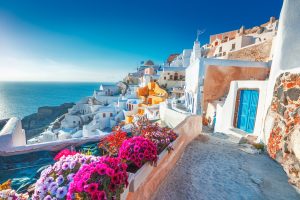 Santorini
Santorini 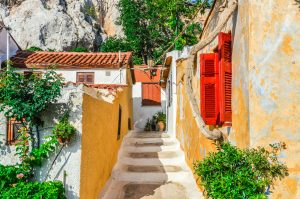 Athens
Athens 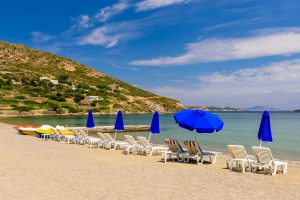 Patmos
Patmos  Istanbul
Istanbul 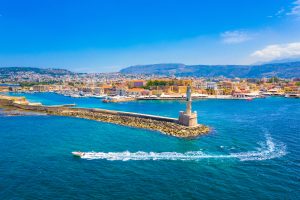 Crete
Crete 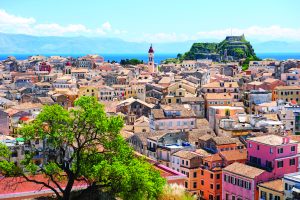 Corfu
Corfu 






 Deutschland (€)
Deutschland (€)
 Turkey (€)
Turkey (€)
